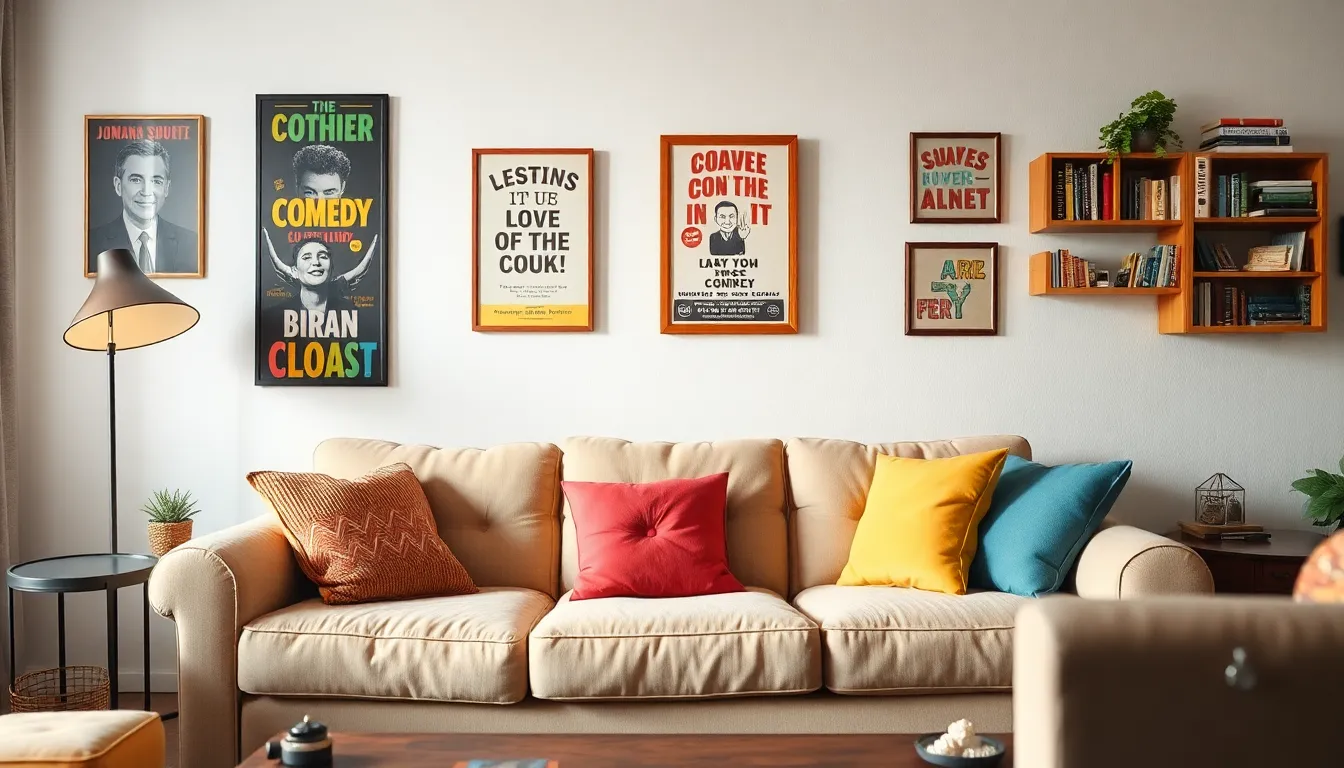In the vast world of humor, few things spark curiosity like the infamous couch joke. It’s that delightful blend of absurdity and wit that leaves audiences chuckling and scratching their heads at the same time. But what exactly is this enigmatic punchline that has taken the comedy scene by storm?
Picture this: a simple couch, a clever twist, and suddenly, you’re in the midst of a comedic masterpiece. The couch joke isn’t just a one-liner; it’s a phenomenon that transcends generations. Whether you’re a seasoned comedy aficionado or a casual observer, understanding this joke can unlock a treasure trove of laughter. Dive in and discover the layers of humor that make the couch joke a staple in the world of comedy.
Table of Contents
ToggleWhat Is the Couch Joke?
The couch joke embodies a humorous approach that thrives on absurdity. It combines unexpected scenarios with relatable experiences. Central to this joke is a reliance on the everyday act of sitting or lounging on a couch, transforming a mundane moment into comedic gold.
Many variations exist within the realm of couch jokes. For instance, some present exaggerated situations that unfold on a couch, while others highlight quirky observations about couch culture. The versatility of this style appeals to diverse audiences, ensuring that humor resonates across different demographics.
The couch joke often features a setup leading to an absurd punchline. This structure creates a contrast that amplifies the laughter. By flipping expectations, it captures attention, making the punchline even more impactful.
Outrageous scenarios contribute to the unique charm of couch jokes. The humor often stems from elevating trivial experiences into realms of hilarity. Each punchline brings a mix of surprise and nostalgia, prompting laughter from both seasoned comedy lovers and casual fans.
Notably, this joke maintains relevance over time. Its ability to adapt to contemporary contexts keeps it fresh. Whether referenced in popular media, stand-up routines, or social interactions, the couch joke remains a staple of humor that continues to reflect everyday life.
Origins of the Couch Joke

The couch joke has a rich history that reflects its evolution in comedic contexts.
Historical Context
Couch humor finds roots in stand-up comedy, particularly in the late 20th century. Comedians like George Carlin and Jerry Seinfeld often utilized everyday scenarios, including couches, to highlight absurdities of modern life. In the 1980s, sitcoms such as “Friends” popularized couch-centric themes, establishing this humor within mainstream entertainment. Couch jokes efficiently blend relatable situations with unexpected twists, encouraging widespread acceptance among diverse audiences. Over the decades, adaptations have emerged, ensuring the couch joke remains relevant as societal norms shift.
Cultural Impact
Couch jokes significantly influence contemporary comedy, permeating various forms of media. They appear regularly in television shows, movies, and sketch comedies, creating a shared connection among viewers. Comedians rely on couch humor for its versatility, transforming mundane experiences into comedic gold. Social media platforms further amplify the reach of couch jokes, enabling rapid sharing and adaptation among users. Popular memes often feature couches, underscoring their role in daily life and humor. This ongoing cultural presence allows the couch joke to resonate with audiences, maintaining its status as a beloved comedic staple.
Variations of the Couch Joke
Couch jokes exhibit an array of entertaining formats that enhance their appeal across different audiences.
Popular Formats
Comedians often use one-liners as a quick and effective way to deliver couch jokes. These brief setups pack humor into a tight structure, allowing for easy sharing. Observational comedy thrives on couch jokes, as it relates everyday experiences to absurdity. List-heavy jokes bring multiple funny aspects of couch culture together in a single punchline. Contextual adaptations let comedians modify jokes for specific environments, keeping the humor fresh and relevant.
Notable Examples
Comedian George Carlin famously turned mundane couch experiences into uproarious commentary on human behavior. His witty reflections on furniture choices resonate with audiences. Additionally, Jerry Seinfeld’s couch observations explore themes of domestic life, making audiences laugh at shared imperfections. The iconic “Friends” couch scenes illustrate the humorous dynamics of relationships and everyday scenarios. These examples showcase how couch jokes adapt across different media, emphasizing their lasting relevance in comedy.
Why the Couch Joke Resonates
The couch joke captivates audiences for various reasons, blending humor with relatable experiences.
Psychological Elements
Humor often acts as a social lubricant, easing interactions among individuals. Couch jokes tap into shared experiences of comfort and relaxation, creating a bridge between the comedian and the audience. Familiarity plays a crucial role; people understand the comfort of lounging on a couch. This common ground fosters connection and enhances enjoyment. The unexpected twists in couch jokes evoke surprise, a key element of humor. Surprise triggers laughter, allowing audiences to appreciate the absurd in everyday situations.
Audience Reception
The reception of couch jokes varies across age groups and demographics. Adults often connect with the nostalgia of sitcoms like “Friends” while teenagers enjoy their presence in modern memes and social media. Comedians who adapt couch humor to current trends effectively engage diverse audiences. Relatability strengthens the impact of these jokes, as listeners recall their own couch experiences. Laughter serves not only as entertainment but also as a shared moment, reinforcing connections among people. Through these dynamics, couch jokes maintain their position as a beloved element of comedy, appealing to wide-ranging audiences.
The couch joke stands as a testament to the power of humor in everyday life. Its unique blend of absurdity and relatability creates a bridge between diverse audiences, fostering connections through shared experiences. As it continues to evolve within popular culture, the couch joke remains a staple in the comedic landscape.
Its ability to adapt to contemporary themes ensures it stays relevant, appealing to both nostalgic adults and younger generations. Whether in stand-up routines or social media, the couch joke’s charm lies in its capacity to transform mundane moments into laughter. Ultimately, it highlights the joy of comedy, inviting everyone to appreciate the humor found in the simplicity of lounging on a couch.




